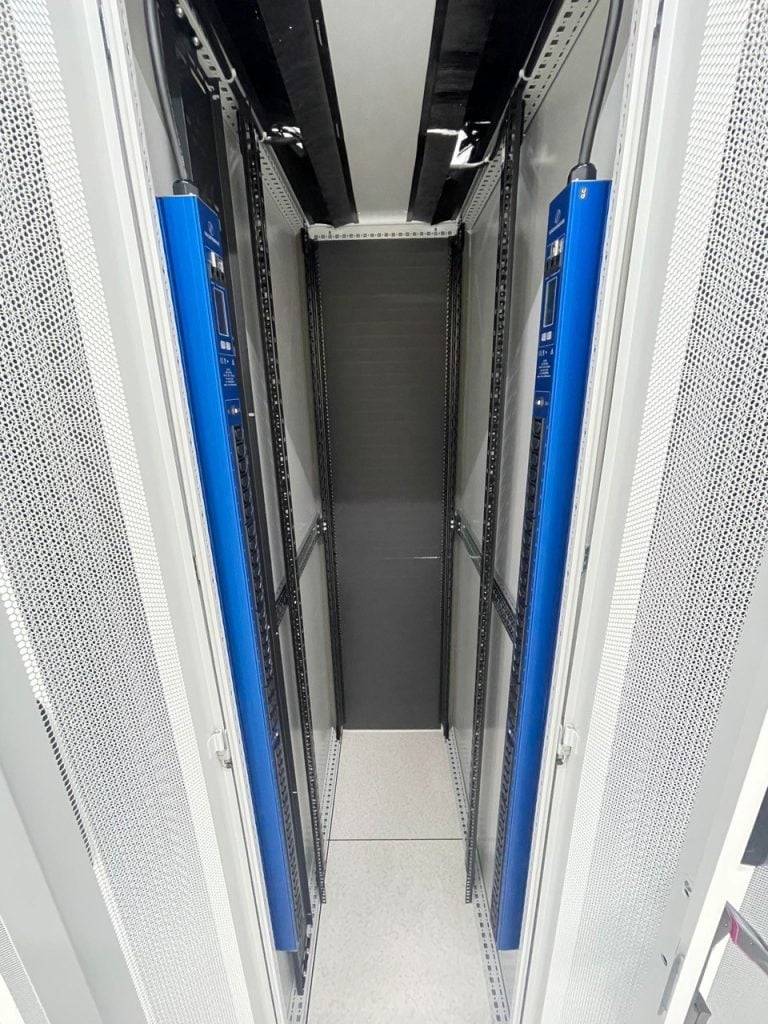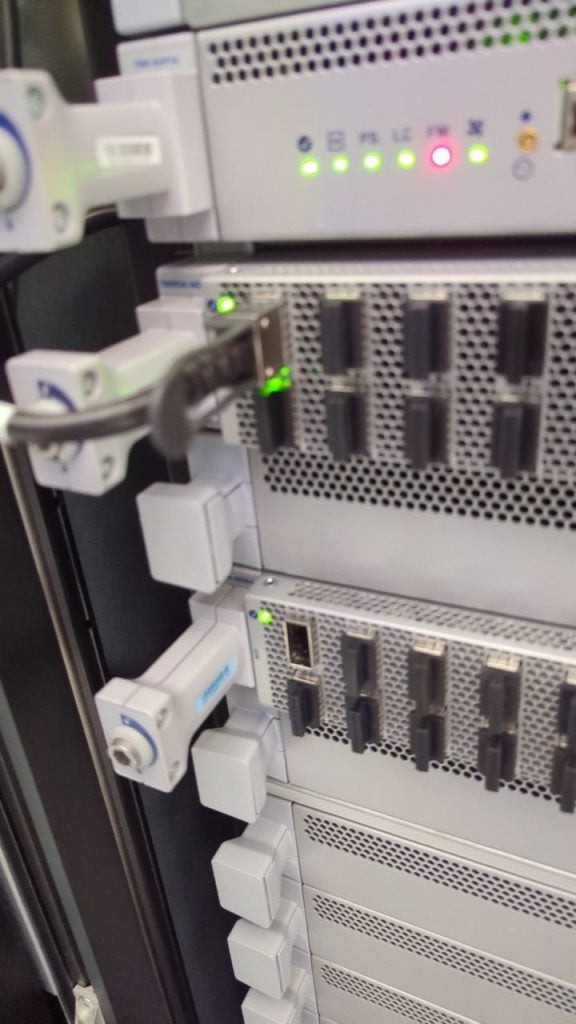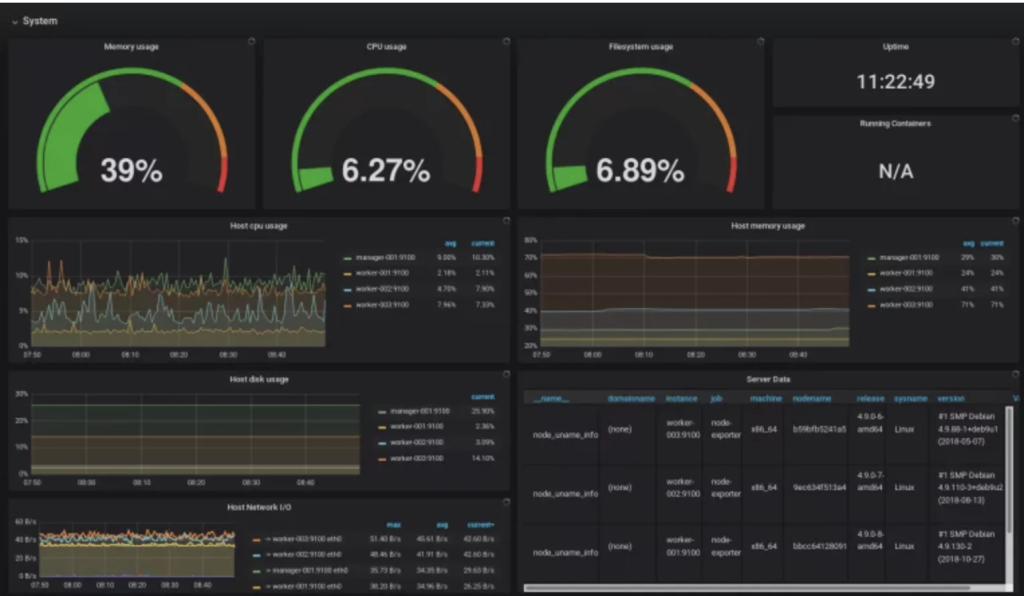Data Center Migration Services | Reboot Monkey
In today’s fast-changing IT world, data center migration is vital for businesses. Whether you need to scale operations, boost security, or update your infrastructure, migration is key.
Data center migration services cover several types: physical, virtual, cloud, hybrid, and application migrations. Each type demands careful planning and execution to ensure a smooth and disruption-free transition.
This guide offers an in-depth look at data center migration. We’ll cover the essential types of migrations, best practices, and the latest trends shaping the future of IT infrastructure.
Understanding Data Center Migration Services
What is Data Center Migration?
Data center migration involves moving your existing data center environment to a new location or IT infrastructure. This process can be physical or virtual, depending on the needs.
It’s a detailed task that requires careful planning to ensure a smooth transition to the new site or infrastructure.
The process includes both logical and operational relocation. For businesses, this might mean shifting to cloud or managed platforms instead of relying on traditional in-house data centers.
Before starting the migration, you should:
- Verify that the new facility or infrastructure can meet future needs.
- Ensure compatibility with current applications and systems.
- Conduct a test migration to identify potential issues.
- Include thorough planning and validation stages.
- Manage staff schedules and workflows to minimize disruption to ongoing operations.
Types of Data Center Migration
Understanding the different types of data center migration is essential for successful planning and execution. Each type serves a specific purpose and comes with its own set of challenges.
| 1. Physical Migration2. Virtual Migration3. Cloud Migration4. Hybrid Migration5. Data Migration6. Application Migration |
1. Physical Migration
Physical migration involves moving physical IT assets like servers, storage devices, and networking equipment from one location to another. It’s often needed when a company relocates, consolidates data centers, or upgrades its infrastructure.
This process demands meticulous planning to ensure all hardware is safely transported, reinstalled, and operational without data loss or damage.
2. Virtual Migration
Virtual migration focuses on moving virtualized assets, such as virtual machines (VMs), from one environment to another.
It’s common in organizations using virtualization technologies like VMware, Hyper-V, or KVM. Unlike physical migration, it doesn’t involve moving hardware, making it less disruptive. However, it still requires careful coordination to properly configure and integrate VMs into the new environment.
3. Cloud Migration
Cloud migration is the process of transferring data, applications, and workloads from on-premises data centers to cloud environments. This type of migration is popular due to the scalability, flexibility, and cost savings of cloud computing.
It can be partial (hybrid) or complete, depending on the organization’s needs. Careful planning is crucial to avoid disruptions and ensure data security during the migration.
4. Hybrid Migration
Hybrid migration combines elements of both physical and virtual migrations. It allows organizations to keep some resources on-premises while migrating others to the cloud.
This approach provides flexibility and control, making it suitable for businesses with complex IT environments or specific compliance needs. Successful hybrid migration requires seamless integration between on-premises and cloud resources.
5. Data Migration
Data migration refers specifically to transferring data from one storage system to another. This process can be part of a larger data center migration project or a standalone task, such as upgrading storage solutions, improving performance, or meeting regulatory requirements.
Data migration is often complex, involving data integrity, minimizing downtime, and securing sensitive information during the transfer.
6. Application Migration
Application migration involves moving specific applications from one computing environment to another. It’s necessary when upgrading infrastructure, switching to new software platforms, or integrating cloud services.
Application migration requires careful consideration of compatibility, performance, and security to ensure applications continue to function as expected in the new environment.
| Types of Data Center Migration | |||
| Type of Migration | Description | Key Challenges | Use Cases |
| Physical Migration | Moving physical IT assets to a new location. | Risk of hardware damage, data loss. | Office relocation, data center consolidation. |
| Virtual Migration | Moving virtual machines between environments. | Ensuring VM configuration, integration. | Virtualization projects, infrastructure upgrades. |
| Cloud Migration | Transferring data and applications to the cloud. | Data security, minimizing disruptions. | Transition to cloud-based operations. |
| Hybrid Migration | Combining on-premises and cloud resources. | Integrating different environments seamlessly. | Complex IT environments, compliance needs. |
| Data Migration | Transferring data from one storage system to another. | Ensuring data integrity, minimizing downtime. | Storage upgrades, regulatory compliance. |
| Application Migration | Moving applications to a new computing environment. | Ensuring compatibility, performance, security. | Infrastructure upgrades, cloud integration. |
Why Businesses Need Data Center Migration
Several factors make data center migration necessary for businesses. Each factor presents its own challenges and opportunities. Understanding these drivers can help organizations decide when and how to migrate effectively.
1. Scalability
As businesses grow, their IT infrastructure must expand to handle increased workloads, data, and applications. Migrating to a larger or more modern data center allows for efficient scaling.
This ensures the business can meet current demands and future growth, especially during periods of rapid expansion or seasonal spikes.
2. Cost Efficiency
Running an outdated or small data center can lead to inefficiencies and higher operational costs. Migrating to a newer, more efficient facility, or utilizing cloud services, can reduce these expenses.
Cloud migration, with its pay-as-you-go model, also allows businesses to scale resources according to actual needs, further improving cost efficiency.
3. Security
Cyber-security threats are constantly evolving. Older data centers may not be equipped to handle these challenges. Migrating to a modern data center with advanced security features can protect sensitive data and meet compliance standards.
This is crucial for businesses that manage personal, financial, or confidential information, where breaches can cause serious legal and reputational damage.
4. Regulatory Compliance
Industries like healthcare, finance, and government must comply with strict regulations regarding data storage, processing, and protection.
As these regulations change, businesses might need to migrate to data centers that meet new compliance standards, such as GDPR, HIPAA, or PCI DSS. Non-compliance can lead to heavy fines and legal consequences, making migration essential.
5. Operational Efficiency
Aging infrastructure can slow down operations, cause downtime, and increase maintenance costs. Migrating to a modern data center with up-to-date technology can boost operational efficiency.
This reduces downtime and enhances the user experience, which is vital for businesses relying on data-heavy applications or those that require high availability.
6. Business Continuity
In today’s fast-moving business world, downtime can be disastrous. Migrating to a data center with strong disaster recovery options, redundant power sources, and fail-over systems helps ensure business continuity.
This is crucial for maintaining customer trust, meeting SLAs, and avoiding financial losses tied to downtime.
| Reasons for Data Center Migration | ||
| Factor | Description | Key Benefits |
| Scalability | Expanding IT infrastructure to handle growth. | Efficiently meets current and future demands. |
| Cost Efficiency | Reducing operational costs by upgrading facilities. | Lowers expenses and improves resource use. |
| Security | Protecting against evolving cyber threats. | Enhances data protection and meets compliance. |
| Regulatory Compliance | Reducing operational costs by upgrading facilities. | Avoids fines and legal issues through compliance. |
| Operational Efficiency | Upgrading to improve performance and reduce downtime. | Increases efficiency and enhances user experience. |
| Business Continuity | Ensuring operations continue during disruptions. | Maintains trust and avoids financial losses. |
Also Read:
Data Center Decommissioning: A Comprehensive Guide to Shutting Down and Upgrading Facilities
Service Breakdown
Managed Data Center Migration Services
Managed data center migration services offer complete support during the entire migration process. These services are designed to handle all aspects of the migration. The goal is to reduce risks and minimize downtime.
Key Components of Managed Data Center Migration Services
Managed services cover various tasks to ensure a smooth transition. Typically, third-party experts provide these services, bringing in specialized knowledge and resources.
| 1. Project Management | 2. Risk Management | 3. Compliance and Security | 4. Post-Migration Support | 5. Performance Optimization | 6. Scalability Planning |
1. Project Management
Project management is vital for a successful migration. It involves planning, executing, and providing post-migration support. The project manager makes sure timelines are met, resources are used efficiently, and all stakeholders are informed.
2. Risk Management
Data center migrations come with risks like data loss and downtime. Managed services include assessing and reducing these risks. This may involve creating backups, setting up fail-over systems, and conducting thorough testing before the migration.
3. Compliance and Security
Maintaining compliance and security is critical during migration. Managed services audit the current setup, implement security measures, and ensure that the migration meets all relevant regulations. This is especially important for industries like healthcare, finance, and government.
4. Post-Migration Support
The migration doesn’t end when the data and applications are moved. Post-migration support is crucial to fix any issues, optimize the new environment, and ensure everything works as expected. Ongoing support helps businesses transition smoothly without disruptions.
5. Performance Optimization
Managed services focus on optimizing performance. This includes adjusting hardware and software settings, improving network performance, and following best practices for data management. The aim is to make sure the new data center operates efficiently.
6. Scalability Planning
Scalability planning is another key part of managed services. This ensures the new data center can grow with the business, whether through adding hardware, cloud resources, or virtualized environments.
| Components of Managed Data Center Migration Services | ||
| Component | Description | Key Benefits |
| Project Management | Oversees the migration process from start to finish. | Ensures timelines are met and resources are used effectively. |
| Risk Management | Identifies and mitigates risks like data loss and downtime. | Reduces potential disruptions and ensures a smooth migration. |
| Compliance and Security | Audits and secures the migration to meet regulations. | Protects sensitive data and ensures compliance with laws. |
| Post-Migration Support | Provides ongoing assistance after the migration. | Quickly addresses issues and optimizes the new environment. |
| Performance Optimization | Fine-tunes settings for peak efficiency. | Improves data center performance and reliability. |
| Scalability Planning | Plans for future growth and resource needs. | Ensures the data center can expand as the business grows. |
Data Center Migration Relocation Services
Data Center Migration Relocation Services involve moving all IT assets, including hardware, software, and network configurations, to a new location. This service becomes essential when businesses outgrow their current data centers or need a more strategic location.
Key Steps in Data Center Migration Relocation Services
Relocating a data center is complex and requires careful planning. Here are the key steps:
| 1. Assessment and Planning | 2. Asset Inventory | 3. Risk Assessment | 4. Logistics Coordination | 5. Testing and Validation | 6. Documentation and Compliance |
1. Assessment and Planning
The first step is to assess the current environment thoroughly. This includes evaluating existing infrastructure, understanding how everything connects, and identifying what needs to be moved.
Detailed planning ensures that the relocation aligns with business goals.
2. Asset Inventory
Creating a complete inventory of all hardware, software, and network components is crucial. This inventory should note each asset’s age, condition, and dependencies. This information helps in planning the move effectively.
3. Risk Assessment
Identifying potential risks is a vital part of planning. Consider risks like data loss, hardware damage, and security breaches. Develop contingency plans, such as data backups and failover systems, to mitigate these risks.
4. Logistics Coordination
Coordinating the physical move is key. This includes ensuring safe transport and setting up equipment in the new location. Close collaboration with transport companies, facilities management, and IT teams is essential for a smooth relocation.
5. Testing and Validation
After the move, thorough testing is necessary. This step ensures that all systems are operational and no data is lost. Test network connections, hardware functionality, and application performance. Address any issues before the new environment goes live.
6. Documentation and Compliance
Documenting every part of the relocation process is critical. This includes the inventory, migration plan, risk assessments, and any changes made. Proper documentation ensures compliance and provides a reference for the future.
| Key Steps in Data Center Migration Relocation Services | ||
| Step | Description | Importance |
| Assessment and Planning | Evaluating infrastructure and planning the move. | Aligns relocation with business goals. |
| Asset Inventory | Creating a detailed list of all IT assets. | Ensures nothing is overlooked during the move. |
| Risk Assessment | Identifying and planning for potential risks. | Minimizes disruptions and data loss. |
| Logistics Coordination | Organizing the physical move and setup. | Ensures a smooth and safe relocation. |
| Testing and Validation | Testing systems post-move to ensure functionality. | Confirms all systems are operational. |
| Documentation and Compliance | Recording every aspect of the move. | Ensures compliance and provides future reference. |
Also, Read:
Rack and Stack Services: Harnessing the Full Potential of Rack and Stack Services
Data Center Migration Consulting Services
Data Center Migration Consulting Services offer expert guidance throughout the migration process. These services help businesses handle the complexities of migration and ensure a successful outcome.
The Role of Consultants in Data Center Migration Consulting Services
Consultants provide specialized knowledge and experience. They help businesses avoid common pitfalls and create an effective migration strategy.
| 1. Assessment and Planning | 2. Vendor Selection | 3. Risk Management | 4. Technical Expertise | 5. Project Management | 6. Post-Migration Support |
1. Assessment and Planning
Consultants start by assessing the current environment. They develop a detailed migration plan that identifies the best approach, estimates costs, and sets realistic timelines.
2. Vendor Selection
Consultants assist in choosing the right vendors for the migration. They recommend vendors for hardware, software, cloud services, and transportation based on the business’s specific needs.
3. Risk Management
Consultants identify and manage risks related to data center migration. Their experience helps them anticipate potential problems and create strategies to minimize disruptions.
4. Technical Expertise
Consultants offer technical expertise to solve any issues that arise during migration. They troubleshoot hardware and software problems, optimize configurations, and ensure compatibility across different environments.
5. Project Management
Consultants manage the entire migration process. They coordinate all aspects, ensuring that timelines and budgets are met. This involves working with internal teams, vendors, and stakeholders to keep the project on track.
6. Post-Migration Support
Consultants provide ongoing support after the migration. They monitor the new environment, address any issues, and optimize the setup for future growth.
| Key Roles in Data Center Migration Consulting Services | ||
| Role | Description | Key Benefits |
| Assessment and Planning | Evaluating the current setup and planning the migration. | Ensures a well-structured and cost-effective migration. |
| Vendor Selection | Choosing the right vendors for the migration. | Ensures seamless coordination and execution. |
| Risk Management | Identifying and managing potential risks. | Minimizes disruptions and ensures a smooth migration. |
| Technical Expertise | Solving technical issues during migration. | Addresses challenges quickly and efficiently. |
| Project Management | Overseeing the entire migration process. | Keep the project on time and within budget. |
| Post-Migration Support | Providing ongoing support after the migration. | Ensures the new environment runs smoothly. |
Global Focus: Geneva Data Center Migration Services
Geneva is a key location for data centers, especially for businesses in finance and international organizations. Geneva data center migration services are essential for companies looking to move or set up data centers in this strategic area.
When migrating to or within Geneva, it’s important to consider regulatory compliance, local expertise, and global connectivity.
Why Geneva?
Geneva’s strategic location and favorable regulatory environment make it an ideal choice for global data center operations. Here’s why Geneva data center migration services stand out.
1. Proximity to Financial Institutions
Geneva is home to many financial institutions. These institutions need fast, secure connections. Migrating to a data center in Geneva ensures that businesses meet these high standards. It provides the performance and security necessary for the financial sector.
2. International Organizations
Geneva hosts many international organizations, making it a prime location for global operations. Geneva data center migration services help businesses take advantage of the city’s advanced telecom infrastructure.
Being close to global decision-makers is a significant benefit for companies with international reach.
3. Regulatory Environment
Switzerland is known for its strong regulatory environment. Geneva benefits from robust data protection laws and a stable political landscape.
Businesses using Geneva data center migration services can trust that their operations will meet strict security and compliance standards.
4. Connectivity
Geneva offers top-notch telecommunications infrastructure. This ensures excellent connections to major European cities. High-speed data transfer and low-latency connections are crucial for efficient operations.
Cloud migration services thrive in this environment, allowing smooth integration with global networks.
| Benefits of Geneva Data Center Migration Services | ||
| Factor | Description | Key Benefits |
| Proximity to Financial Institutions | Close to major financial centers with tailored security. | Provides low-latency and high-security for financial operations. |
| International Organizations | Hosts many international organizations. | Leverages advanced telecom and proximity to global leaders. |
| Regulatory Environment | Switzerland’s strong legal and regulatory framework. | Ensures robust data protection and compliance. |
| Connectivity | Advanced telecom infrastructure with excellent European connections. | Offers high-speed data transfer and low latency for smooth operations. |
Cloud Migration Services for Data Centers
Cloud migration services are essential in modern data center strategies. They offer different ways to move applications and data to the cloud. The main approaches are lift-and-shift, re-platforming, and refactoring.
Each method provides varying levels of optimization, depending on the business needs.
| 1. Lift-and-Shift Cloud Migration | 2. Re-platforming for Cloud Optimization | 3. Refactoring for Cloud-Native Transformation |
1. Lift-and-Shift Cloud Migration
Lift-and-shift is a cloud migration service that moves applications and data to the cloud with minimal changes. This method is popular because it’s fast and simple. However, it may not fully optimize applications for the cloud.
Advantages:
- Speed: Lift-and-shift allows for quick migration, making it ideal for businesses that need a fast solution.
- Cost-Effective: Since it involves minimal changes, this method is usually less expensive than other migration strategies.
Challenges:
- Performance Issues: Applications not optimized for the cloud can experience problems like increased latency and inefficient resource use.
- Increased Costs: Without proper optimization, cloud resources may be underutilized, leading to higher costs over time.
Use Cases
Lift-and-shift is best for non-critical applications that need to be moved quickly or when existing infrastructure is nearing the end of its life.
2. Re-platforming for Cloud Optimization
Replatforming involves making some changes to applications during the migration process to take advantage of cloud features. This approach balances speed with optimization, offering better performance without extensive re-engineering.
Advantages:
- Improved Performance: Replatforming allows applications to work more efficiently in the cloud, improving overall performance.
- Scalability: Applications can better use cloud features like auto-scaling and load balancing.
Challenges:
- Complexity: Replatforming requires a deeper understanding of the application, which can make the migration process more complex.
- Time-Consuming: The extra adjustments needed can make replatforming take longer than a lift-and-shift migration.
H5: Use Cases
Replatforming is ideal for applications that need to scale dynamically or work well with other cloud services.
3. Refactoring for Cloud-Native Transformation
Refactoring is the most advanced cloud migration service. It involves completely re-engineering an application to fully use cloud-native features. This method offers the highest level of optimization but requires significant time and expertise.
Advantages:
- Full Optimization: Refactoring allows businesses to fully benefit from cloud-native features like micro-services, server-less computing, and containerization.
- Cost Efficiency: Cloud-native applications are designed to optimize resource use, which can lower costs and improve performance.
Challenges:
- Resource-Intensive: Refactoring demands significant resources, including time and expertise, which can disrupt ongoing operations.
- High Complexity: The process involves complex re-engineering, making it challenging and costly.
Use Cases
Refactoring is best suited for mission-critical applications that require top performance, scalability, and resilience.
| Cloud Migration Services | |||
| Strategy | Advantages | Challenges | Best For |
| Lift-and-Shift | Fast, cost-effective | Performance issues, higher costs | Quick migration for non-critical apps |
| Replatforming | Improved performance, scalability | More complex, time-consuming | Apps needing dynamic scaling |
| Refactoring | Improved performance, scalability | Resource-intensive, complex | Mission-critical app |
Step Migration in Data Center Relocation
Step migration, also known as phased migration, is a strategic method that involves moving workloads in stages. This approach helps businesses reduce risk and disruption by gradually shifting to a new environment.
Benefits of Step Migration
Step migration offers several advantages, such as reduced downtime, lower risk, and the ability to test and validate each phase before moving forward.
Reduced Downtime
Step migration minimizes downtime by moving workloads in stages. This allows businesses to keep operations running during the migration. It’s especially important for mission-critical applications that can’t afford long periods of inactivity.
Lower Risk
By testing and validating each phase before proceeding, step migration reduces the risk of data loss, hardware failure, and other issues. Businesses can identify and fix potential problems early, lowering overall migration risk.
Flexibility
Step migration provides flexibility in scheduling and resource allocation. Critical workloads can be prioritized first, while less important tasks can be moved later. This allows for a more tailored and efficient migration process.
Testing and Validation
At each stage of the migration, thorough testing is possible. This includes checking network connections, application performance, and data integrity. Ensuring everything works correctly before moving to the next phase helps avoid complications.
Challenges of Step Migration
While step migration offers many benefits, it also has challenges. These include the need for careful planning, increased complexity, and potential resource constraints.
Careful Planning
Step migration requires detailed planning to ensure each phase is executed smoothly. This involves creating a thorough migration plan, coordinating resources, and setting clear timelines for each stage.
Increased Complexity
The phased approach can add complexity to the migration process. Businesses must manage multiple stages and coordinate activities across different teams and locations.
Resource Constraints
Step migration may require more resources, including staff, hardware, and software, to support the phased approach. Businesses need to ensure they have the necessary resources to complete each phase successfully.
| Step Migration in Data Center Relocation | ||
| Aspect | Benefits | Challenges |
| Reduced Downtime | Minimizes downtime by moving in stages. | Requires careful scheduling. |
| Lower Risk | Reduces risk through testing at each phase. | Increases complexity. |
| Flexibility | Allows tailored migration based on workload priority. | May need additional resources. |
| Testing and Validation | Ensures functionality before moving to the next phase. | Demands thorough planning. |
Also Read:
Server Rack vs Network Rack: How-To Safeguard and Optimize Your IT Infrastructure
Which of the following is the best example of step migration?
When asked, “Which of the following is the best example of step migration?” The answer is clear: Step migration is an approach where workloads are moved gradually in phases.
This method reduces downtime, lowers risks, and provides flexibility, but it also requires careful planning and resource management.
Emerging Trends in Data Center Migration Services
Data center migration services are evolving quickly. New technologies are changing how businesses manage their IT environments. Keeping up with these trends is key to successful migrations.
1. Edge Computing
Edge computing moves data processing closer to where data is created. This decentralized approach reduces delays and improves performance. As more businesses adopt edge computing, data center migration services must adapt.
Impact on Migration Strategies
Edge computing requires spreading workloads across different locations, not just one central data center.
This means migrating data and applications to edge nodes. It also involves optimizing network performance and ensuring data stays consistent across these distributed sites.
Integration with Cloud and On-Premises Resources
As edge computing becomes more common, businesses must integrate edge resources with their existing cloud and on-premises systems. Careful planning and coordination are essential to make sure everything works together smoothly.
2. Artificial Intelligence and Machine Learning
Artificial intelligence (AI) and machine learning (ML) are transforming data migration services. These technologies help automate tasks, predict potential issues, and make better decisions during migration.
AI-Driven Migration Planning
AI can analyze past data and current conditions to create optimized migration plans. It helps choose the best migration approach, predict risks, and suggest solutions.
Machine Learning for Performance Optimization
ML algorithms continuously monitor the new data center environment. They ensure workloads run efficiently and resources are used effectively.
Automation of Routine Tasks
AI and ML can automate routine tasks like data transfer and system configuration. This reduces the workload for IT teams and lets them focus on more critical parts of the migration.
3. Hybrid and Multi-Cloud Strategies
More businesses are adopting hybrid and multi-cloud strategies. This trend requires data center migration services to evolve to manage these complex environments.
Migration Across Multiple Clouds
Multi-cloud strategies involve moving workloads across different cloud providers. Each provider has unique requirements, making the migration process more complex. Careful planning and coordination are crucial.
Integration of On-Premises and Cloud Resources
Hybrid strategies combine on-premises data centers with cloud resources. This creates a flexible environment that can scale as needed. Detailed planning is required to ensure these systems work together without issues.
Data Consistency and Compliance
Keeping data consistent and compliant across multiple clouds and on-premises environments is a major challenge. Businesses must implement strong data management practices to maintain data integrity and meet regulatory requirements.
| Smooth Data Center Migration Services with Reboot Monkey Ready to discuss your data center migration? Connect with us for a quick online consultation. Our experts at Reboot Monkey are here to guide you through a smooth, efficient process. Discover why our smart hands and remote hands are the best choice for your migration. Schedule Your Consultation |
Conclusion
Data center migration is a complex process. It requires careful planning, precise execution, and ongoing support. Whether moving to a new physical location, shifting to the cloud, or adopting a hybrid approach, businesses must consider many factors to ensure success.
Understanding the different types of data center migration services is crucial. Each method has its own benefits and challenges.
Recognizing these can help businesses choose the right strategy for their needs. As the IT landscape evolves, keeping up with emerging trends in data center migration services is essential.
Using managed services, consulting expertise, or a phased approach like step migration can further boost the success of a migration. Reboot Monkey, for example, offers expert data center migration services that help businesses navigate these challenges smoothly.
In a rapidly changing IT world, staying informed about the latest trends and best practices is key. Businesses that do so will be better equipped to optimize their infrastructure and maintain a competitive edge.
FAQs – Data Center Migration Services
What is the typical timeline for a data center migration?
Answer: The timeline for data center migration varies. It can take a few weeks or several months. The duration depends on the size of the data center, the type of migration (physical, virtual, cloud), and the level of testing and validation needed before the full transition to the new environment.
How can we ensure data security during a migration?
Answer: To ensure data security during migration, use strong encryption and secure data transfer protocols. Conduct thorough security audits. Also, consider partnering with a trusted provider like Reboot Monkey.
They have experience handling sensitive data. Regular monitoring during the migration helps detect and fix any security issues quickly.
What are the main risks associated with data center migration?
Answer: The main risks include data loss, extended downtime, hardware failures, and security breaches. You can reduce these risks with careful planning, comprehensive testing, and backup solutions.
Hiring experienced professionals and using a phased migration approach, like the services offered by Reboot Monkey, can also help ensure a smooth transition.
How do we decide between a lift-and-shift or replatforming approach?
Answer: Choose lift-and-shift for quick, cost-effective migrations with minimal changes. This method is ideal for moving legacy applications quickly. Replatforming, however, involves optimizing applications for the cloud.
It offers better performance and scalability, making it suitable for applications that need enhanced cloud integration and long-term efficiency.
Also Read:
Rack and Stack Services: Harnessing the Full Potential of Rack and Stack Services
FAQ 5: What role do consultants play in data center migration?
Answer: Consultants offer expert guidance throughout the migration. They assess the current environment, develop migration plans, manage risks, and ensure compliance.
They also help select vendors, provide technical expertise, and oversee the entire migration. This ensures that timelines and budgets are met, leading to a successful and efficient transition.





